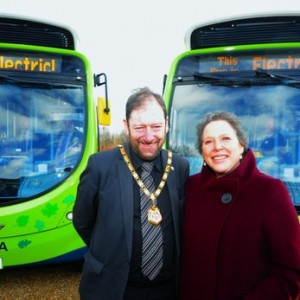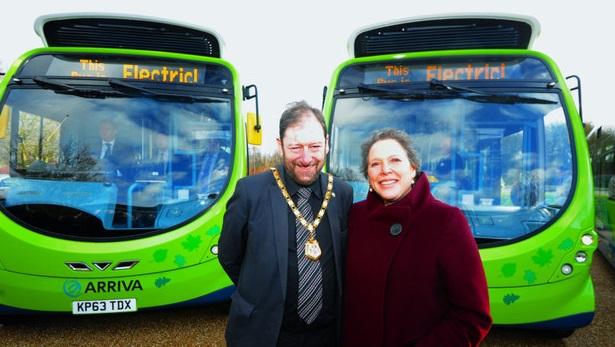An electric bus fleet plying the Milton Keynes route, the first of its kind in the UK, gives the Citroen C1 and future French cars a run for its money. The electric bus runs quieter and smoother due to its battery-operated motor, but, unlike other vehicles that require regular charging, the driver of this Citroen C1 does not even have to get out of the car. CEO Anthony Thomson of HaloIPT, the company that installed the wireless charging technology, said all the electric bus driver has to do is park up, turn off your car’s key, and charging will start automatically.
Using electromagnetic induction, the charging process for the electric bus transfers power from a built-in pad into the ground to yet another that is installed in the Citroen’s bottom. The technology may be installed on a garage floor, a supermarket’s parking or a charging station’s ground. As soon as the driver parks the car, two pads line up and charging starts automatically with the flick of a switch. Developed originally in New Zealand’s University of Auckland, the system was manufactured by HaloIPT for commercial use.
Faraday and What His Discovery Did for Electric Bus Fleets
Electromagnetic induction was first discovered in 1831 by English physicist Michael Faraday when he placed two coils close to each other, applied power to one of them, and produced a magnetic field that induced a voltage to occur across the second coil. In the Citroen’s case, both coils have been embedded inside of two pads. Although some electricity get wasted inevitably during this charging process, those who have tried the process genuinely liked its simplicity.
What wireless charging did for the electric bus is now doing for cars in the consortium of Coventry and Birmingham Low Emission Demonstrators (CABLED), probably the biggest test for electric vehicles. CABLED’s project leader, Neil Butcher, observed that city planners are not exactly agreeable to having lines of charging posts down the streets because they think these add to current street clutter and there are safety and health issues linked to live electric cables that hang between posts and cars in bad weather.
HaloIPT, on the other hand, claims that bad weather does not pose a problem for wireless power transfer and the company is certain that future developments for electric cars will include more induction stations. In fact, luxury car manufacturer Rolls Royce has already equipped its 102EX Phantom Experimental Electric model with an inductive-charging car plate.
According to Imperial College London’s Professor Paul Mitcheson, wireless charging of vehicles is dependent on the non-radioactive and near-field joining of the charging point with the receiver on the vehicle so it becomes impossible to have a system without radiation. But if the system is well designed, Mitcheson said that it can have radiation levels well below the standard safety limits of the Institute of Electrical and Electronics Engineers (IEEE).
The Turin and Genoa Wireless Charging
The Italian cities of Turin and Genoa have had electric bus fleets equipped with specialised pad plying their respective streets since the year 2002. These cities, in fact, have the appropriate pads embedded into pavements of certain bus stops for charging these vehicles while on the go. Mathias Wechlin of the German company Conductix-Wampfler, which licenses the wireless technology, said that passengers like the experience of riding an electric bus because the ride is smoother than that powered by diesel.
While the more expensive cost of an electric bus have been the primary reason why cities and municipalities are hesitant to purchase them, Wechlin said the situation was the opposite in the Italian cities. Officials there invest money in alternative transport system trials and chose buses as their most suitable option and when opposition to the hazards of plug-in technology for health and safety reason, Conductix-Wampfler offered wireless charging for the buses. Today, Genoa has eight and Turn has 23 electric buses plying their cities’ routes.

